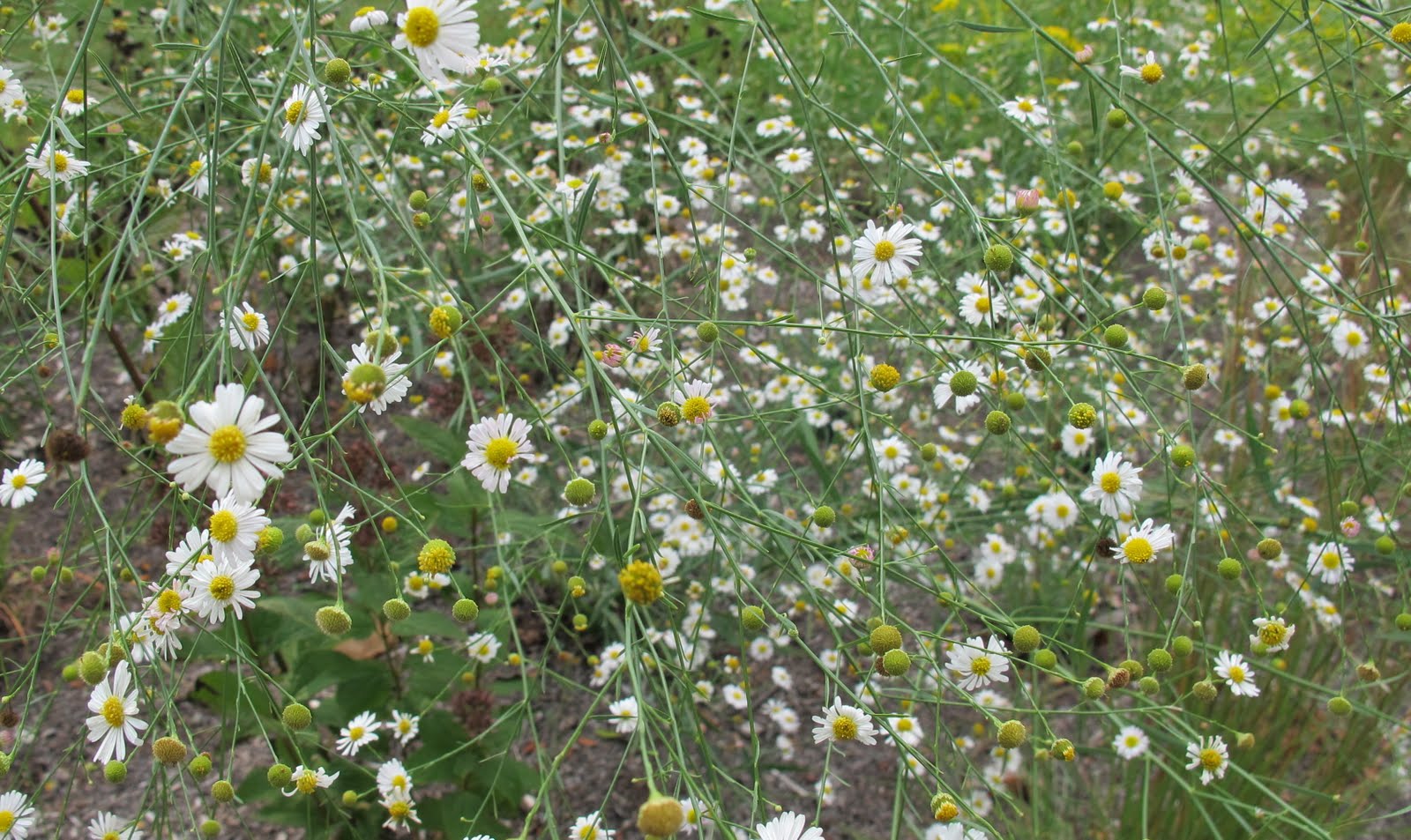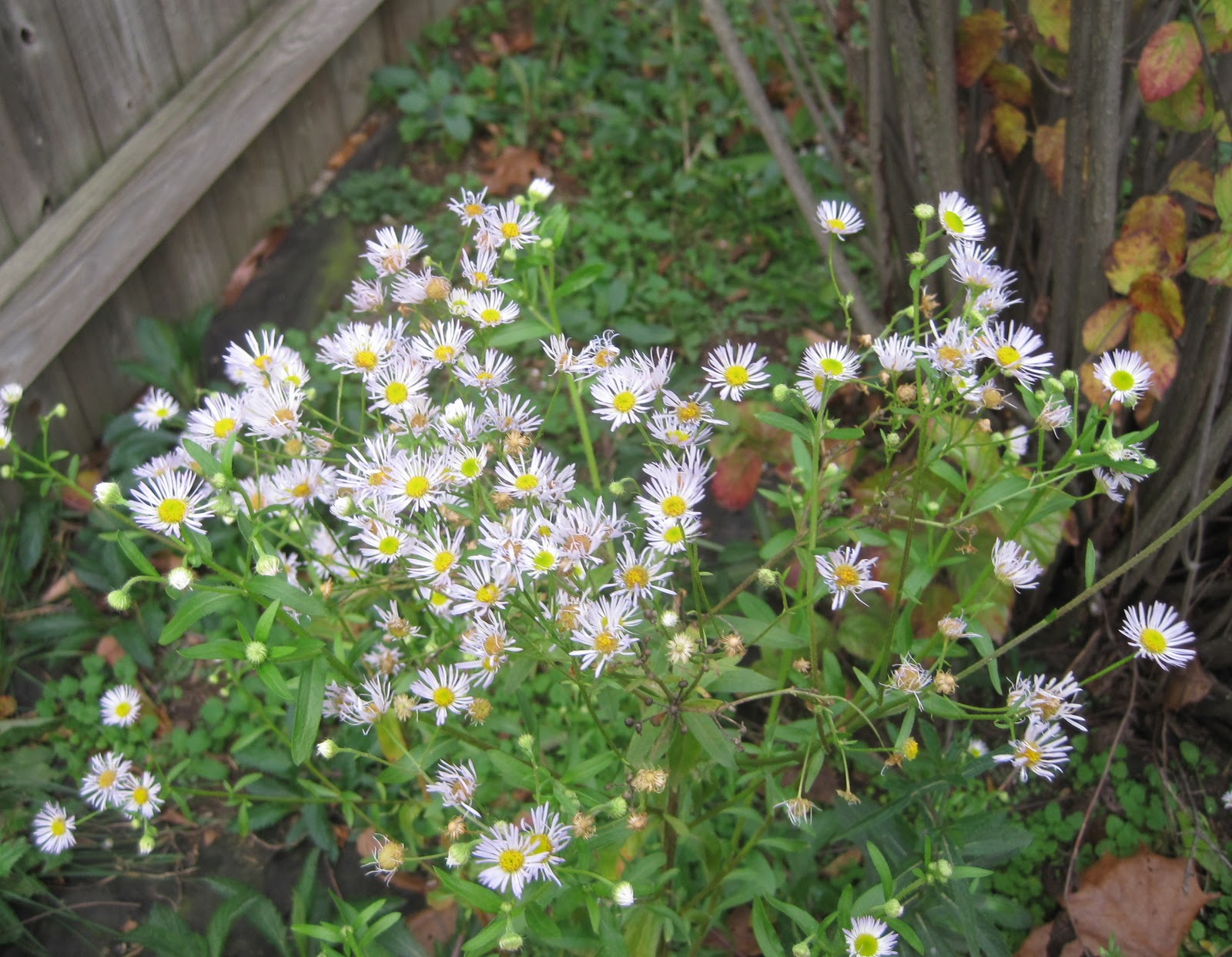Boltonia, a perennial flower native to the Eastern United States, grows in my garden in two places.
In the August Dreams Garden border, a named variety of Boltonia, Boltonia asteroides ‘Snowbank’ covered part of the high summer blooming border in mid-September.

In an area that I call The Shrubbery, Boltonia asteroides bloomed in mid-November where I never planted it.

Based on that, I called it a weed in my November bloom day post.
Then someone emailed me and pointed out that Boltonia isn’t a weed, it’s a perennial flower.
But this Boltonia showed up out of nowhere in a place where I didn’t plant it. Does that alone make it a weed? It appears, too, to be in its native form and doesn’t have that same airy quality that the named variety ‘Snowbank’ has. Does that just mean it is a wildflower?
Weed or wildflower? Take your pick. I choose weedy wildflower.
(Please visit Gail at Clay and Limestone for more posts for Wildflower Wednesday, which takes place on the fourth Wednesday of the month.)


My dear friend, It's just a willful wildflower and needs you to dead head it so it's pretty little flowers don't pop up here and there. Or, you can plant them all together and create a nice swath for the bumbles! The fairies would like that! gail
I vote for wildflower, but very wild. It is a pretty thing.~~Dee
I think I have had some Boltonia appear here, too. I usually call it a weed until it's blooming–then it's definitely a wildflower!
Wishing you a very Happy Thanksgiving, Carol!
I'm with you – unwanted flowers are weeds. The fact that they're perennials just makes the weeder's work a little harder.
hehe, in your definition, a lot of our flowers in Mother's garden are weeds! Here, you planted one and then the seeds will sprout, and sometimes they are too plenty they really become weeds, so we pull them out. But in more real sense, i think weeds are those not domesticated or just growing in the wild. But, it depends on the climate maybe, because a weed here maybe an ornamental there, and vice versa. e.g. Mimosa pudica